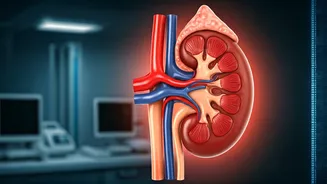Skin: Health Indicators
The skin, a large and complex organ, frequently manifests internal health issues. Conditions like diabetes, liver disorders, and autoimmune diseases can
present noticeable changes on the skin. Paying attention to these external manifestations can be crucial for early detection and intervention. Changes in skin pigmentation, the appearance of rashes, and alterations in skin texture can all provide important clues about the body's internal state. Recognizing these signals allows individuals to seek appropriate medical advice promptly, leading to better health outcomes and proactive management of potential problems. Understanding these links is essential for both proactive health maintenance and early detection of serious conditions.
Diabetes: Skin Manifestations
Diabetes, a prevalent metabolic disorder, often exhibits several skin-related symptoms. Necrobiosis lipoidica, characterized by raised, yellowish or reddish patches on the skin, and sometimes small, hard, yellowish bumps known as eruptive xanthomas, may indicate undiagnosed or poorly managed diabetes. Additionally, some individuals with diabetes may develop acanthosis nigricans, which causes dark, velvety patches in skin folds. Such skin changes can serve as warning signs, prompting individuals to seek medical evaluation for diabetes. Careful observation of the skin can aid in timely intervention and control of blood sugar levels, helping to minimize complications and enhance the quality of life for those with diabetes.
Liver Problems: Clues
Liver issues can also leave their mark on the skin, often in the form of jaundice, a yellowing of the skin and eyes. This is due to the buildup of bilirubin, a waste product that the liver normally processes. Other skin indicators include itching and spider angiomas, small red blood vessels that may appear like spiderwebs on the skin's surface. Conditions like lichen planus, which can cause itchy, purplish bumps, and necrolytic migratory erythema, which manifests as a red, blistering rash, can also be associated with liver damage. By recognizing these signs, individuals can be prompted to undergo the necessary diagnostic tests, ensuring they can receive timely medical treatment and improve liver health outcomes.
Autoimmune Issues: Signs
Autoimmune diseases, where the body's immune system attacks its own tissues, can also be identified through skin symptoms. A butterfly rash, a red or purplish rash across the cheeks and nose, is a classic sign of lupus. Other autoimmune conditions may cause various skin rashes, ulcers, and changes in skin texture. For example, some individuals experience a condition known as morphea, which causes hardened patches of skin. Such changes serve as vital diagnostic cues, allowing medical professionals to identify underlying autoimmune diseases, provide prompt interventions, and offer support to those affected, improving both their well-being and quality of life.
Other Conditions: Signals
Besides diabetes, liver problems, and autoimmune disorders, skin changes can signal other health concerns. Tripe palms, marked by thickened skin on the palms, can be associated with certain cancers. Granuloma annulare, which presents as raised, ring-shaped skin lesions, might also be present. Furthermore, the appearance of wooden hands can point to kidney-related issues. These skin manifestations, though not as common, provide valuable information for diagnosis. Being aware of these additional correlations emphasizes the value of regular health evaluations. Consulting with a healthcare provider about any unusual skin changes is very important for early detection, appropriate treatment, and better overall health outcomes.












